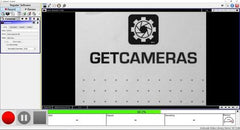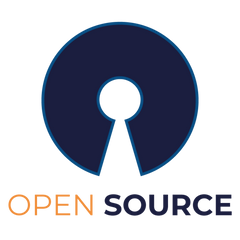Menu
Overview of our Computer Vision Software:

DAHENG IMAGING SDK (SOFTWARE DEVELOPMENT KIT)

Zebra Aurora Vision Image Processing Software

2nd Look (Video Recording)

Open Source Software
Computer Vision Software For Image Processing
Computer vision software and industrial cameras work together for image processing and automate tasks. In essence, a machine vision system is not complete with just one industrial camera. In order to take pictures, the industrial camera and computer vision software communicate. Subsequently, the software employs algorithms to identify crucial features for image processing. Though there are countless uses, some examples include measurements, OCR, shape recognition, product type detection, and product positioning.
Moreover, a database that houses the results can be linked to the computer vision software. This data can be sent to an industrial robot or PLC for results communication, metrology, or quality control. For image processing, there are numerous computer vision software packages available. Numerous programs and solutions are available, such as turnkey commercial solutions, open source alternatives, or specialized libraries for particular programming languages.
A commercial computer vision software package offers a sizable "toolbox" filled with numerous pre-built functions and algorithms. When faced with difficult applications, traditional machine vision techniques for image processing might run out of steam. Recent advances in artificial intelligence have made it easy to get around such restrictions. Artificial intelligence is available as an add-on solution for all of the major commercial computer vision software solutions. Another name for this feature is deep learning.
 Software Development Kit (SDK)
Software Development Kit (SDK)
For use with our industrial cameras, we provide a free SDK that includes programming examples in multiple programming languages as well as camera drivers. It offers the easy-to-use Galaxy Viewer program. See our Knowledge Center article for more details on the Galaxy Viewer and its extra features: Software development kit – GeT Cameras Inc (industrial-cameras.com)
SDK access on our download page
First image acquisition, camera configuration, and camera control during initialization or in R&D settings are all designed into the SDK. Writing your own computer vision software is made possible by the SDK's feature documentation and sample programs. By developing the image processing software, it serves as the foundation for managing the industrial camera. The sample programs make it simple to capture and store images or adjust camera settings. You can then add your own algorithms to make your own computer vision software application.
The software development kit works with ARM platforms, such as the Raspberry Pi and NVIDIA TX series, and 32/64 bit hardware platforms, such as home and business PCs. Operating systems that are supported are Android, Linux, and Windows. MAC OS and Notably are not supported for industrial use; however, engineers can run a virtual Windows or Linux computer on a MAC for compatibility. Python, C++, and C#/.NET are among the programming languages supported by the SDK. Additional languages can be obtained upon request; however, they are not part of the basic package.
 Zebra Aurora Computer Vision Software
Zebra Aurora Computer Vision Software
Among the companies that lead the computer vision software market is Zebra Technologies. They create computer vision software that makes it simple to create your own image processing application for project automation. Computer vision integrators can solve automation projects quickly and easily with Zebra Aurora Vision software. For machine vision engineers, the image processing software guarantees a stable graphical environment. It gives them the ability to create unique computer vision software applications for industrial automation and quality control.
Using a dataflow-based methodology, the Zebra Aurora Vision image processing software offers an extensive library of pre-built image analysis filters. Its ability to serve professional users allows it to be used for both simple creation of standard applications and effective development of intricate, customized projects. Because of its adaptability, computer vision engineers can use it as a flexible tool to meet a variety of industrial quality inspection and automation requirements.
We offer a range of image processing packages on our Zebra Aurora computer vision software website. The Aurora Vision Software portfolio can be categorized simply as follows:
- Aurora Vision Studio is an extremely potent and user-friendly image processing program designed for machine vision engineers. Low-level programming environment with graphics for quick development and simple customization.
- Aurora Vision Library: C++ and .NET programming features that are ready to use. Create your own software for intricate uses.
- Add-on: Aurora Vision Deep Learning. Choose your photos, annotate labels or flaws, and train the program. For your particular application, you could continue to train it. A pre-trained instrument for optical character recognition is called Deep Learning OCR. It provides an excellent solution, particularly for characters that are damaged, hazy, or complex.

IOI 2nd Look Recording Software
For recording video from industrial GigE and USB3 Vision cameras in both industrial and research settings, IO Industries offers 2ndLook software for Windows and Linux. 2ndLook is a tool for recording and diagnosing issues rather than computer vision software. It connects to and manages industrial machine vision cameras via the GenICam protocol. This implies that you can use the 2ndLook software to effortlessly record image streams from an industrial camera around-the-clock.
The 2ndLook program creates a video file by taking individual photos with the camera. For additional analysis, these recordings can be viewed. It is popular for recording scientific experiments and troubleshooting manufacturing processes because of its ease of use. Furthermore, it can record H.264 streams and compress data from industrial cameras.
 Open Source Computer Vision Software
Open Source Computer Vision Software
Free computer vision software is known as open source software. Furthermore, you can alter and adapt the open-source code to your machine vision application's particular requirements.
OpenCV is among the most significant packages of free and open-source computer vision software. When applying computer vision to OEM projects, this open-source software package is frequently utilized. Although MATLAB, Python, and Java language bindings are available, C++ is the primary programming language used by OpenCV. Unlike some commercial solutions, such as Zebra Aurora, OpenCV requires a thorough understanding of machine vision techniques and a programming language in order to correctly implement them in a final code.
Kinovea is an open source software program that is worthy of note. The software developed by Kinovea is not authentic machine vision software, in contrast to OpenCV. It comes from athletes' motion capture. We frequently use our high frame rate MER2-041-528U3C and MER2-160-227U3C cameras for high speed recording. Applications such as research and quality control can benefit from high-speed recording, measurement, and motion tracking capabilities. To download the Kinovea software, go to our Kinovea website page.
The Essence Of Image Processing Software
Image processing software is necessary for machine vision for several important reasons.
First and foremost, image processing cannot be completed by a single camera. Strong hardware is also necessary for computer vision software algorithms to function well. Smart cameras are examples of integrated systems that are limited in what they can accomplish. Algorithms for image processing facilitate automated inspection, which enables devices to evaluate products for defects, maintain quality, and identify objects promptly and precisely. This reduces human error, produces repeatable outcomes, and boosts production efficiency.
Furthermore, image processing software can work in challenging conditions like dim light or unfavorable environments where human vision might be difficult or impossible. Additionally, it facilitates data extraction and measurement, providing engineers with accurate and valuable data for ongoing enhancements and quality assurance.
Are you wondering what computer vision software to get for image processing? Please use the form below to get in contact.
Sunday,Monday,Tuesday,Wednesday,Thursday,Friday,Saturday
January,February,March,April,May,June,July,August,September,October,November,December
Not enough items available. Only [max] left.
Add to WishlistBrowse WishlistRemove Wishlist


